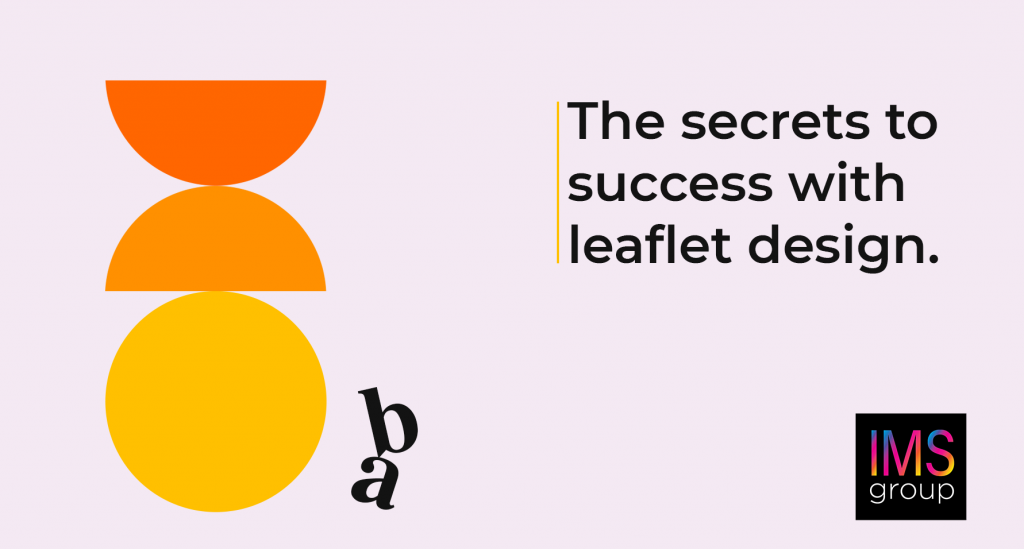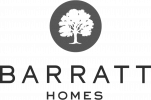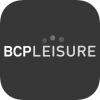The Secrets to Success with Leaflet Design

Before you start designing, it’s crucial to understand who your audience is. Knowing your target audience will guide your design choices, from the colours and images you use to the language and tone of your message.
Get to know your audience
Consider age, gender, interests, and preferences. This demographic information will influence your design elements. For instance, a leaflet targeting young adults might use vibrant colors and modern fonts, while one aimed at seniors might opt for larger text and a more traditional design. Understanding your audience’s lifestyle and daily activities can also impact your design choices, helping you select imagery and language that resonates with them. Additionally, analyzing your audience’s purchasing behavior can provide insights into what motivates them, allowing you to tailor your message more effectively.
Market research can offer a deeper understanding of your audience. Use surveys, interviews, and focus groups to gather qualitative data about their preferences and expectations. This research will help you identify trends and patterns in consumer behavior, enabling you to design a leaflet that speaks directly to your audience’s desires and needs. Don’t overlook the value of social media analytics, which can provide real-time insights into what your audience is discussing and sharing.
Tailor your content to address the specific needs or problems of your audience. The more relevant your leaflet is to your audience, the more effective it will be. Ask yourself, what solution does your product or service provide, and how can you convey that through your design? Consider incorporating testimonials or case studies that demonstrate how your offering has positively impacted others in similar situations. Additionally, highlight any unique benefits or features that set your product or service apart from competitors, making it more appealing to potential customers.
Using the right language
The headline is the first thing people notice, and it’s your chance to make a strong impression. A compelling headline should be clear, concise, and engaging.
Avoid vague language. Instead, use direct and specific wording that tells the reader exactly what they can expect. Consider incorporating numbers or questions to grab attention. For example, “Discover 5 Ways to Boost Your Health Today” is more engaging than “Improve Your Health.” Crafting a headline that highlights a benefit or solution can also draw in readers, as it directly addresses their needs or pain points. Experiment with different headline styles, such as questions, commands, or statements, to see which resonates best with your audience.
Incorporate power words that evoke emotion or curiosity. Words like “exclusive,” “proven,” “secret,” and “ultimate” can make your headline more intriguing. These words can trigger an emotional response, prompting readers to learn more about your offering. Additionally, using sensory words that paint a vivid picture can enhance the impact of your headline, making it more memorable. Remember, the goal is to entice readers to continue exploring the rest of your leaflet.
Testing multiple headlines can help you determine which one resonates best with your audience. Use A/B testing or focus groups to compare different headline options and gather feedback. This process can provide valuable insights into what captures your audience’s attention and encourages them to engage with your content. Continuously refining your headlines based on feedback and performance metrics will ensure your leaflet remains effective and relevant.
Arrange accordingly
A well-designed leaflet uses visual hierarchy to guide the reader’s eye through the content in the order of importance.
Use contrast in color, size, and style to highlight the most important elements. A bold headline, for example, should stand out against a lighter background. Similarly, important information like calls to action (CTAs) should be easy to spot. Consider using contrasting colors for different sections of your leaflet to create visual interest and draw attention to key points. Experiment with font styles and sizes to create a dynamic layout that enhances readability and engagement.
Arrange your content so that the most critical information comes first. This might mean placing your headline at the top, followed by supporting details and ending with contact information or a CTA. Use bullet points, numbered lists, or subheadings to organize information logically and make it easy for readers to scan. Consider the flow of information and how readers will naturally navigate through your leaflet, ensuring a seamless and intuitive experience.
Balancing text and visuals
Incorporate images, icons, and graphics to break up text and add visual interest. Visual elements can help convey complex information quickly and effectively, making your leaflet more engaging. Ensure that images are relevant to your content and resonate with your audience, enhancing the overall message. Use captions or short descriptions to provide context for visual elements, reinforcing key points and guiding readers through the content.
Simplicity is key in leaflet design. Overloading your leaflet with too much information or too many design elements can overwhelm your audience.
Keep your text concise and to the point. Use bullet points or short paragraphs to break up information and make it easier to digest. Remember, the goal is to communicate your message quickly and effectively. Prioritize the most important details and eliminate any unnecessary information that could distract from your main message. Consider using clear and straightforward language to ensure your audience understands your offering without confusion.
Don’t be afraid to leave blank spaces in your design. White space, or negative space, helps your content stand out and makes your leaflet easier to read. It gives the design a clean, organized look that enhances readability. Strategic use of white space can also draw attention to key elements, such as headlines or CTAs, ensuring they are not overlooked. Balance is crucial; aim for a harmonious blend of text, images, and white space to create a visually appealing leaflet.
Choose fonts that are easy to read and appropriate for your audience. Avoid using too many font styles, which can create a cluttered and confusing appearance. Ensure that text size is large enough to be legible, especially for important information. Pay attention to alignment and spacing, as these elements can impact the overall readability and visual appeal of your leaflet. Testing your design on different devices or printing samples can help you identify any readability issues before finalizing your leaflet.
Let your audience take action
A strong call to action (CTA) is essential for converting interest into action. Your CTA should encourage the reader to take the next step, whether it’s visiting your website, calling your business, or attending an event.
Use clear, action-oriented language that tells the reader exactly what to do next. Phrases like “Call Now,” “Visit Our Website,” or “Register Today” create a sense of urgency and prompt the reader to act. Consider incorporating time-sensitive offers or limited-time promotions to enhance the urgency of your CTA. Be specific about the benefits or outcomes of taking action, reinforcing the value of your offering.
Ensure your CTA stands out by using contrasting colors or bold text. Position it prominently in your design, so it’s easy to find. The CTA is the culmination of your leaflet’s purpose, so give it the attention it deserves. Experiment with different placements and styles to see which generates the most engagement. Consider adding visual cues, such as arrows or icons, to direct readers’ attention to the CTA.
Offer multiple ways for your audience to take action, catering to different preferences and needs. Include various contact methods, such as phone numbers, email addresses, or QR codes linking to your website. Providing several options increases the likelihood that readers will engage with your CTA, as they can choose the method that is most convenient for them. Ensure all contact information is accurate and up-to-date, avoiding any potential frustration for your audience.
In summary…
Creating an effective leaflet is about more than just attractive design. It’s about understanding your audience, communicating clearly, and encouraging action. By following these five secrets to success, you’ll be on your way to designing professional and creative leaflets that capture attention and drive results. Remember, the key to successful leaflet design is to keep it simple, focused, and audience-centric.
Incorporate these tips into your next leaflet project, and watch your marketing efforts flourish. Whether you’re a seasoned designer or a small business owner, mastering these elements will help you create leaflets that not only look great but also deliver your message effectively.
Happy designing!
P.S. If you still need some assistance, did you know that we have a full creative studio at IMS Group. Call us today to get your vision turned into a reality!










